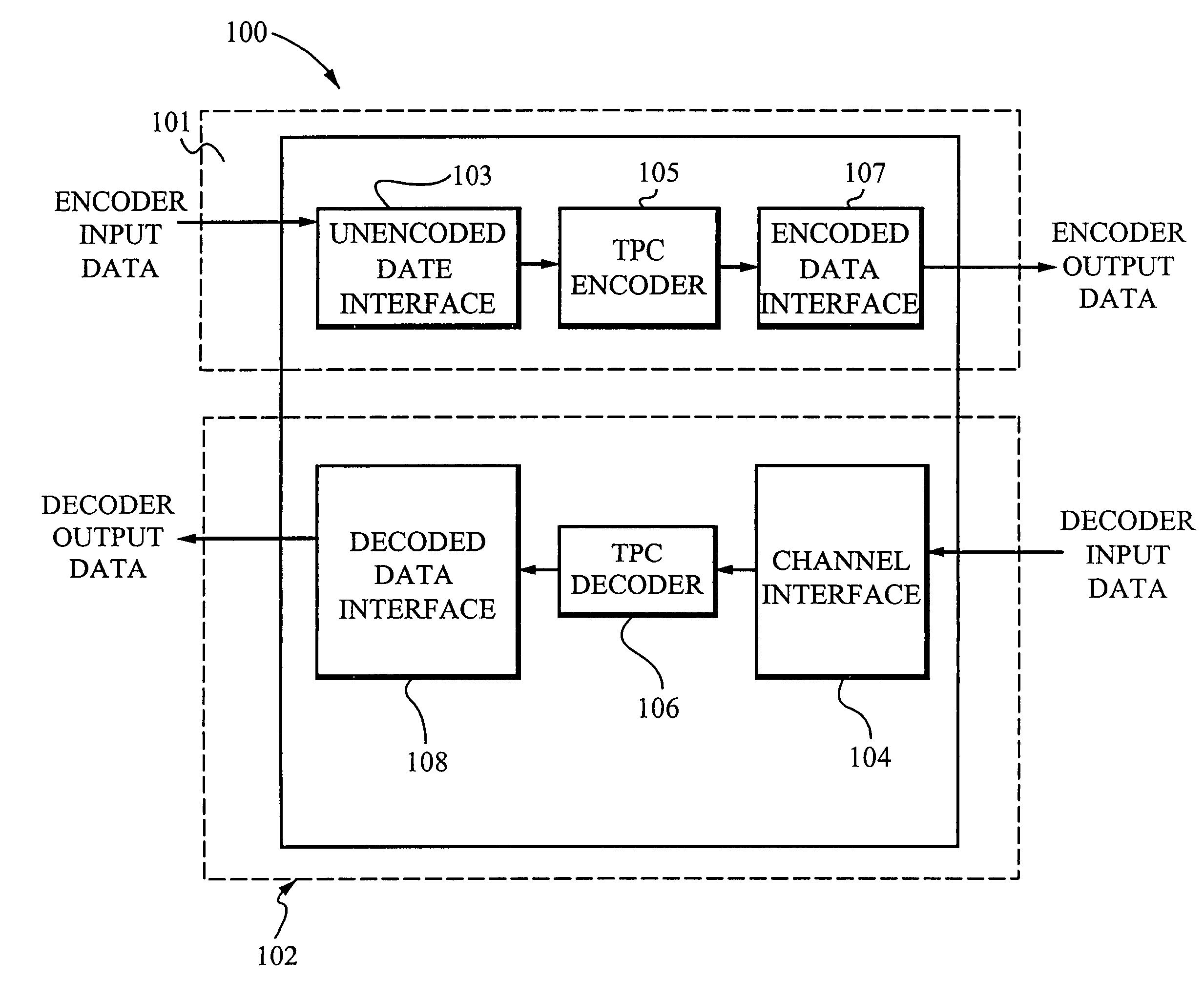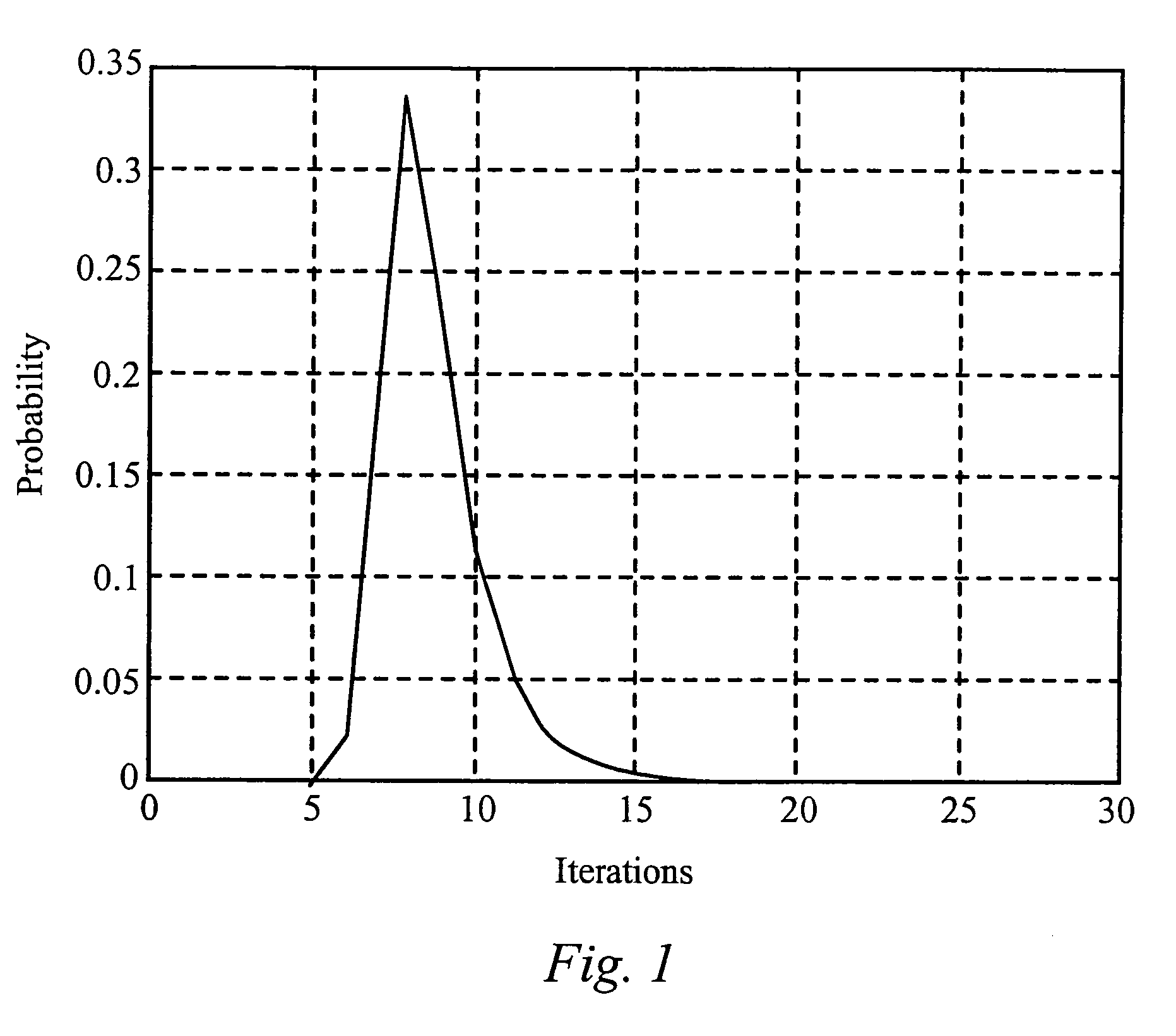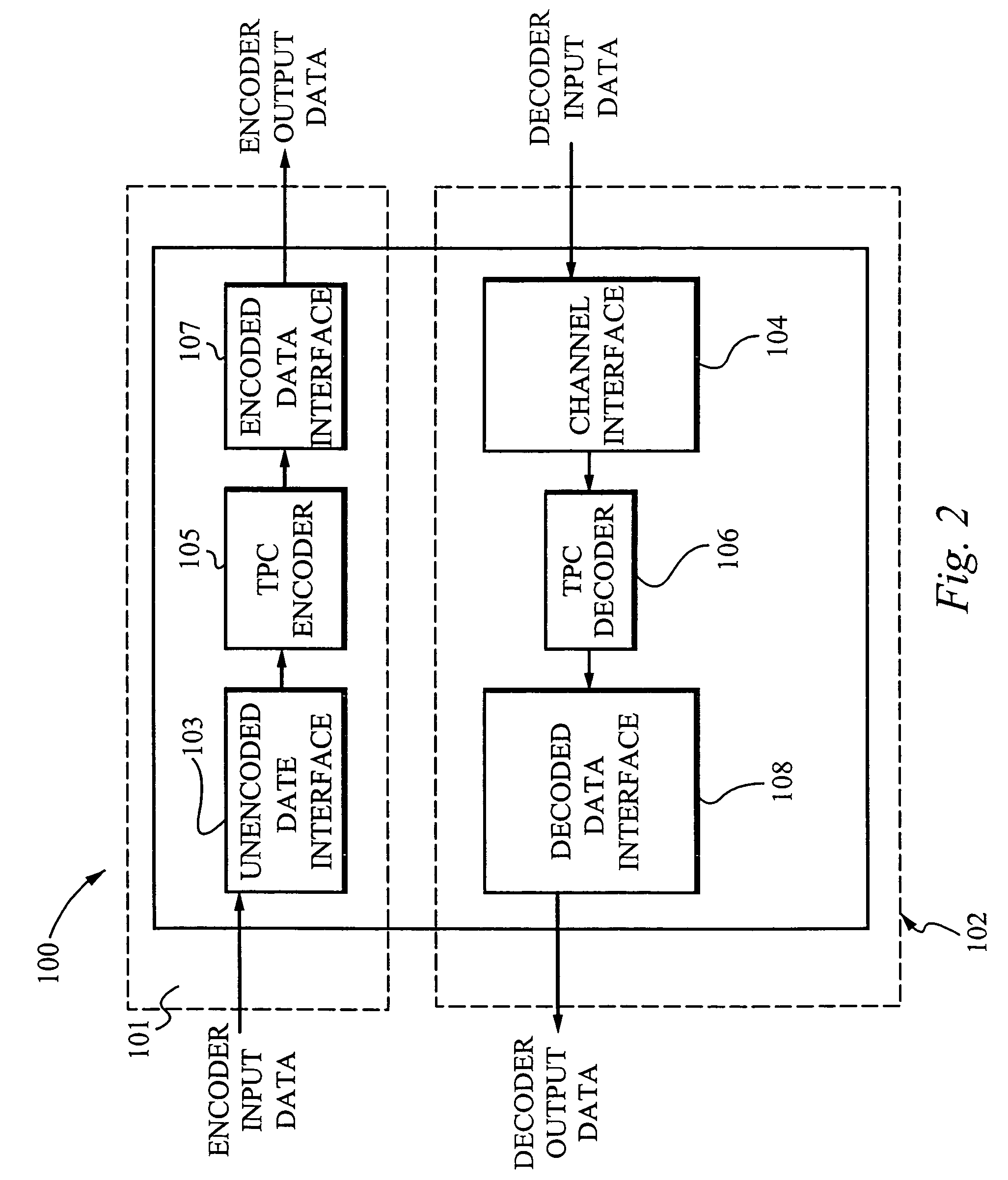Enhanced turbo product code decoder system
a technology of enhanced turbo and product code, applied in the direction of code conversion, error correction/detection using turbo codes, code conversion, etc., can solve the problems of difficult practicability of such a coding scheme, very complex computation of optimal llr, and the same code redesign issu
- Summary
- Abstract
- Description
- Claims
- Application Information
AI Technical Summary
Problems solved by technology
Method used
Image
Examples
Embodiment Construction
[0031]The present invention is to an enhanced Turbo Product Code (ETPC) Forward Error Correction (FEC) Encoder / Decoder System or Device. The system in accordance with the present invention supports single or multi-dimensional codes having both extended-Hamming and parity only constituent codes. This device may integrate both an ETPC encoder and decoder as well as modules for helical interleaving, synchronization mark insertion and detection, CRC computation, scrambling, and higher order modulation symbol mapping.
[0032]FIG. 2 shows a block diagram of the system in accordance with the present invention. The encoder path 101 of the device includes an unencoded data interface 103, an encoder module 105, and an encoded data interface 107. The decoder path 102 of the device 100 includes a channel interface 104, a decoder module 106 and a decoded data interface 108. Each module in the decoding path 102 of the present system 100 preferably serves as a counterpart for each module in the enco...
PUM
 Login to View More
Login to View More Abstract
Description
Claims
Application Information
 Login to View More
Login to View More - R&D
- Intellectual Property
- Life Sciences
- Materials
- Tech Scout
- Unparalleled Data Quality
- Higher Quality Content
- 60% Fewer Hallucinations
Browse by: Latest US Patents, China's latest patents, Technical Efficacy Thesaurus, Application Domain, Technology Topic, Popular Technical Reports.
© 2025 PatSnap. All rights reserved.Legal|Privacy policy|Modern Slavery Act Transparency Statement|Sitemap|About US| Contact US: help@patsnap.com



